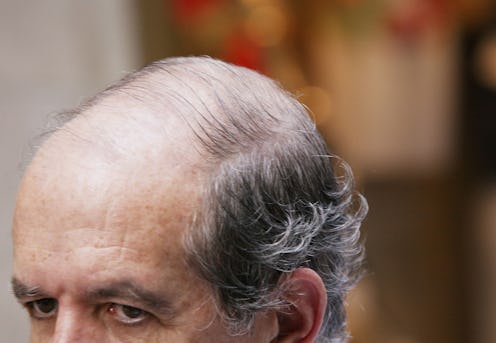News
This Arthritis Drug Could Cure Alopecia
A man with almost no hair on his head or body was able to grow a full head after eight months, and all because of an arthritis drug. Yale researchers administered the arthritis drug to a man with alopecia universalis, a rare medical condition that currently has no cure, and watched as he grew hair on his head, eyebrows, armpits ... and other areas. This is the first reported incident of a successful targeted treatment of the condition.
"The results are exactly what we hoped for," Dr. Brett A. King, assistant professor of dermatology at Yale University School of Medicine wrote in the report, published in the Journal of Investigative Dermatology. He continued:
This is a huge step forward in the treatment of patients with this condition. While it’s one case, we anticipated the successful treatment of this man based on our current understanding of the disease and the drug. We believe the same results will be duplicated in other patients, and we plan to try.
Besides alopecia universalis, the 25-year-old patient was also diagnosed with plaque psoriasis, a condition that causes red splotches on the skin. King thought that he might be able to treat both conditions with the same medicine; he used the FDA-approved drug tofacitinib citrate, which is normally used to treat rheumatoid arthritis. The drug had successfully treated psoriasis in humans in the past, and it had also reversed a form of alopecia in mice.
The patient had been taking 10 mg of tofacitinib per day for two months when the first signs of hair growth started to become apparent, and after three more months of taking the drug at 15 mg daily, he was able to grow a full scalp of hair, eyebrows, eyelashes, facial hair, and body hair — hair that he hadn't seen in seven years.
So what does this mean? Can this lead to prescription or over-the-counter treatment? And how many people could this groundbreaking discovery help?
What Exactly Is Alopecia?
Alopecia universalis is the most severe form of alopecia areata, an autoimmune disease that leads to hair loss after one's immune system attacks the hair follicles. Alopecia areata occurs when one loses clumps of hair in certain areas. The hair can sometimes grow back after a period of time, but then fall out in another area.
Alopecia universalis is when complete hair loss occurs and is also unpredictable — sometimes hair grows back, but it's impossible to determine when and how much.
Who Does It Affect?
Alopecia affects men and women equally. Alopecia areata is most likely to affect people under 20, but adults of any age can develop it. People with alopecia who are more likely to experience permanent hair loss include those who have a family history of the condition, have another autoimmune disease, and are prone to allergies.
How Many People Does It Affect?
Alopecia areata is relatively rare — only about two percent of Americans suffer from the condition. Alopecia universalis is even more rare, affecting less than 200,000 people, which is 0.06 percent of the U.S. population.
What Does This Mean in Terms of Treatment?
King hopes to apply the study findings to developing a formal treatment for alopecia areata. He's submitted a proposal for a clinical trial of a cream form of tofacitinib. As he wrote in the report:
This case highlights the interplay between advances in science and the treatment of disease, and it provides a compelling example of the ways in which an increasingly complex understanding of medicine, combined with ingenuity in treatment, benefits patients.
